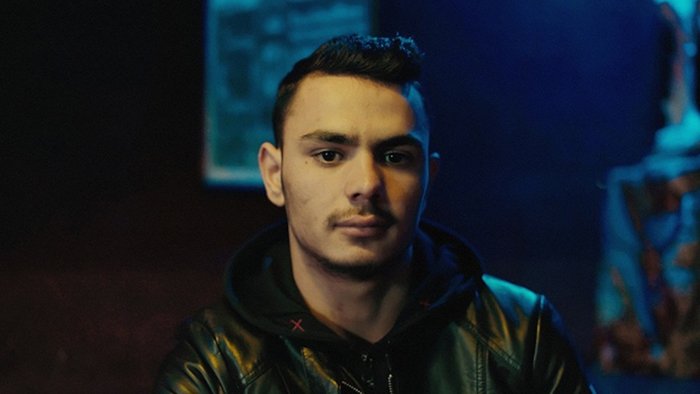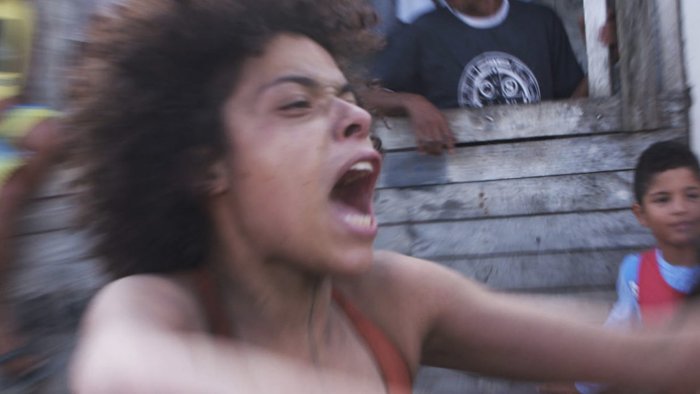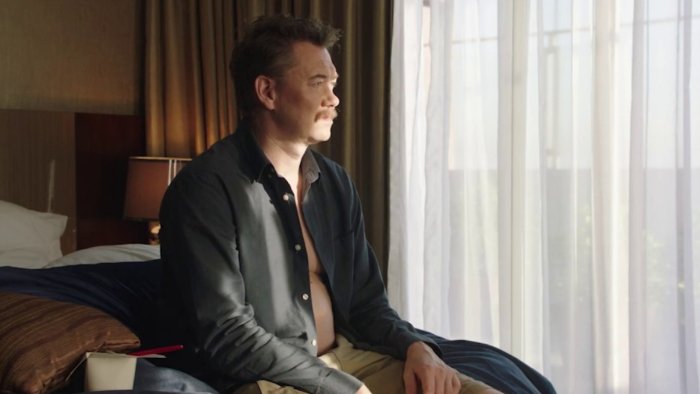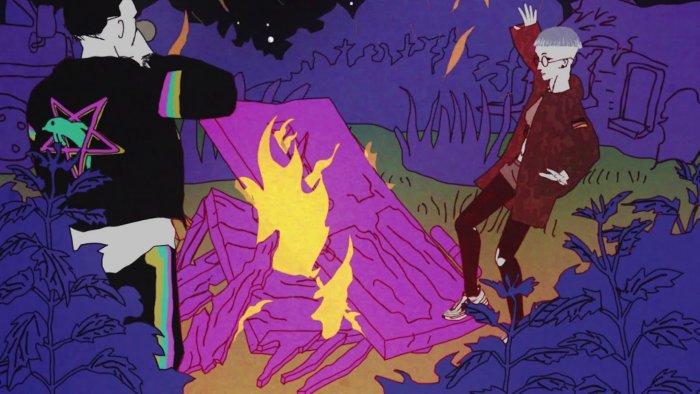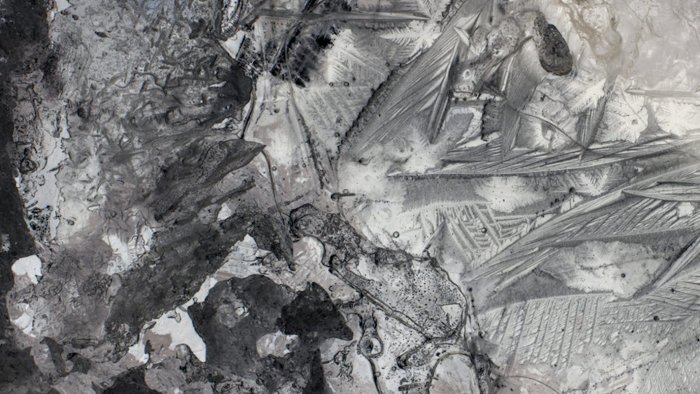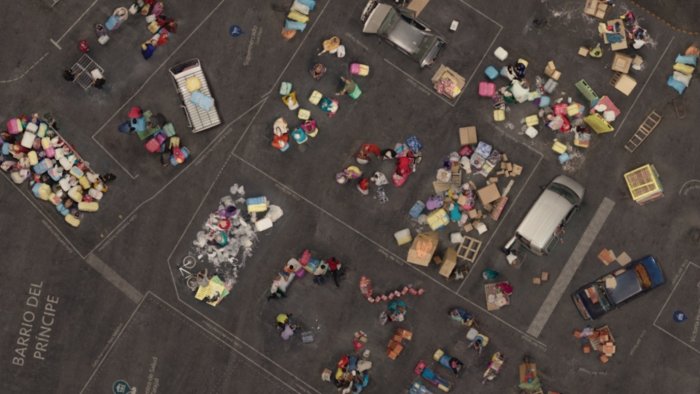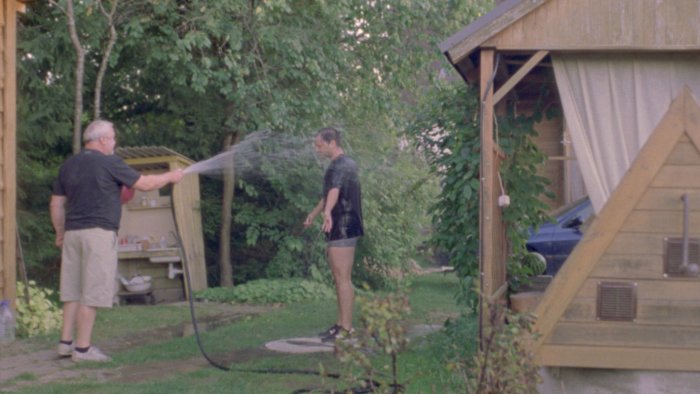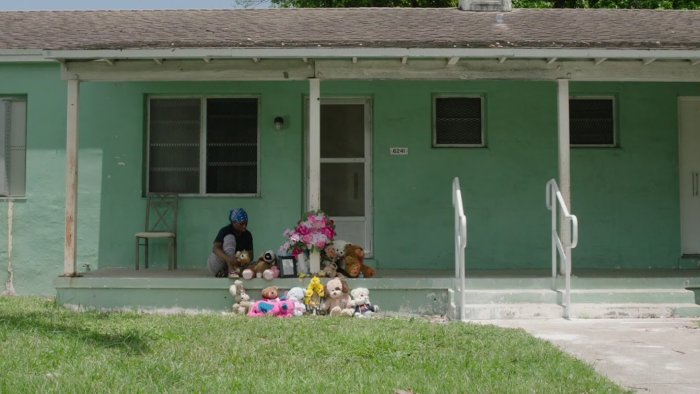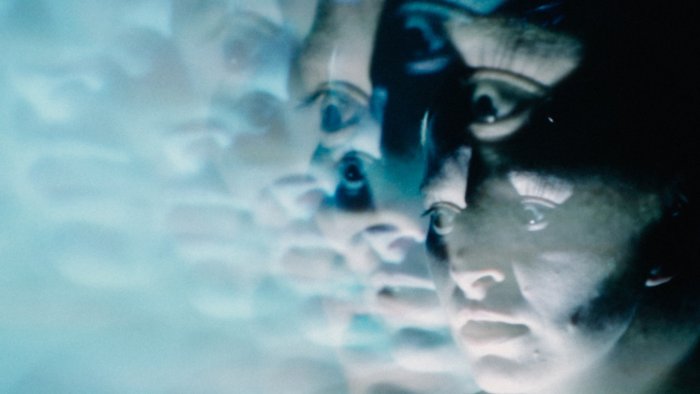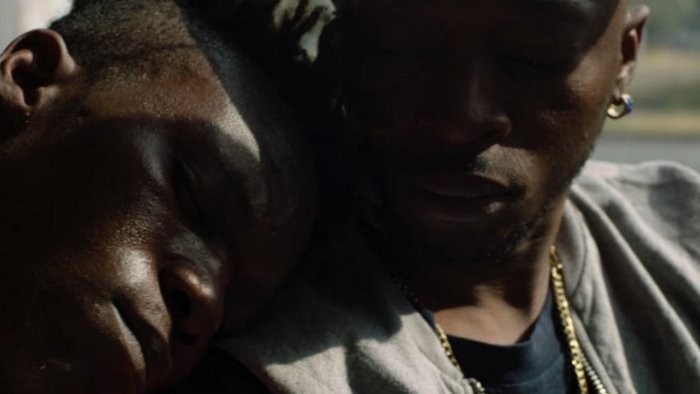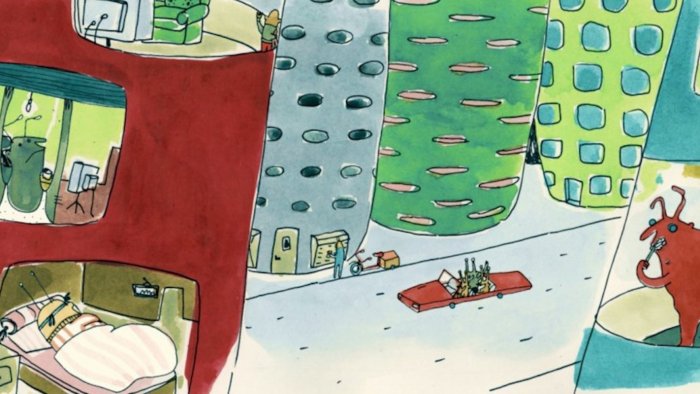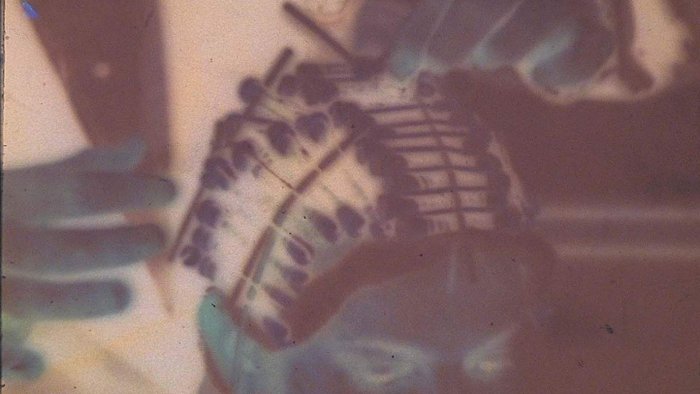Selection of the films in the Competitions
If we should further curate a mini festival of short films drawing from the titles in the Competitions, here are the films FILMEXPLORER will select. The order? Simply alphabetical… Retrospectively, we realised that we would not need to adjust this selection for gender ratio – which sounds like good news to us.
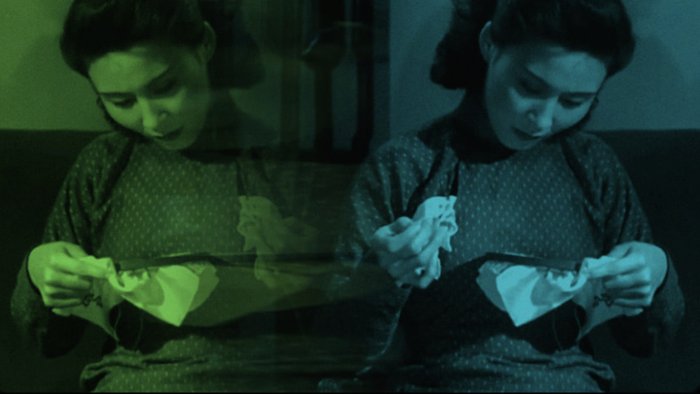
FOCUS - Reviews
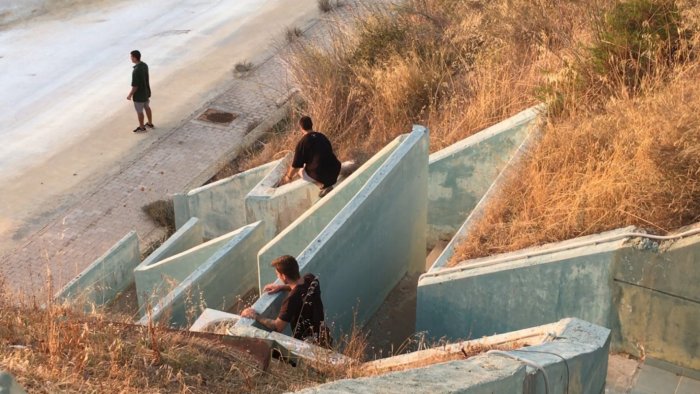
CH 2019 | 15'11''
It is exactly what one would call “immersive documentary”. The performative aspect influences the camera work and the editing. Yet, the evident presence of the camera does not prevent the filmmakers from delivering images that convey transcendence: the adrenaline of discovering, of venturing into forbidden places and, moreover, the huge spaces of modernist architecture that constitute a sort of ungraspable vanishing point contribute to it. The confrontation with a vanishing airport and its gigantic ruins is approached from the sensual point of view of the physical confrontation between the pure energy of a group of young practitioners of parkour and the dumbness of the concrete. All of this occurs in Athens, which automatically introduces a symbolic layer: hope is both flourishing from, and stumbling over, the ruins of a country. By the way, the airport site is a forbidden place because it has been sold to private investors that want to build a luxury resort. Of course, for the new Goddess ruling the world: security…
This article contains a third-party video. If you would like to watch the video, please adjust your settings.
ARG-DE 2019 | 18’24’’
Patric Chiha’s Brothers of the Night (2016) has already focused on the world of rom male sexual workers, and I noticed that the use of fictional elements was the perfect solution to convey the hard and complex reality of people that can do little more than hold on to (more or less fictitious) dreams. Manuel Abramovich chooses an artificial setting to give a space of self-reflection to their witnesses. We face nothing but faces hearing their own voices, their own tales, which we hear correspondingly. We pay witness to the self-reflection on the witnesses, but these layers of mediation, even if they are displayed in a minimalist way, don’t put us at a distance from the reality we discover; on the contrary, the effect is even more raw and direct than seeing what we hear. We directly witness the troubles of the spirit, the consciousness that could break the dream.
Brilliant finale: we hear as one of the interviewed aggressively puts Manuel Abramovich’s procedure itself in question. In this way, the filmmaker self-reflects on the power dynamic of filmed interviews, which includes a form of prostitution, or of service, an intercourse that needs rules, fairness, respect, and reciprocity. Only a film that is able to critically reflect upon itself will balance the violence of taking the voice or the image of the filmed person.
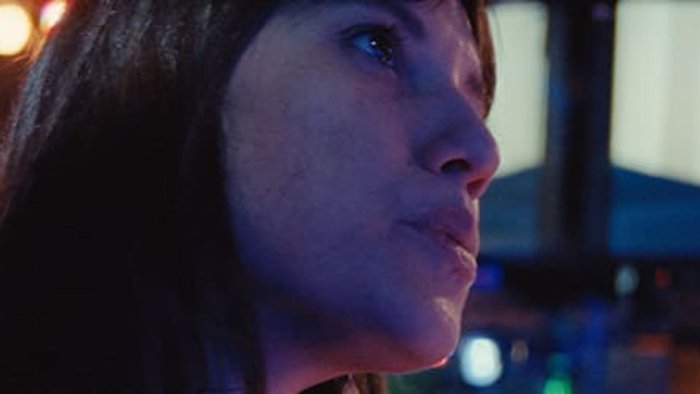
UK-FR-PT 2019 | 21’55’’
It is not easy to write about a film that is entirely cinematographic. Intimately bound to her previous film I Hope I’m Loud When I’m Dead (UK 2018), Beatrice Gibson weaves a horizontal filmic discourse where the image, the sound and the text layers have equal importance, be they considered in their solo performances or in their contrapuntal dialogues. Starting from Gertrude Stein’s inspiring textual input, Gibson explores motherhood as an occurrence, but also as a perspective, which is accidentally challenged by another perspective, the one of sisterhood. There is no privilege in motherhood, as also there is no narrative privilege in Deux soeurs qui ne sont pas soeurs. Thus, the film emerges as a hymn to non-exclusiveness, something that is often forgotten in the family “projects” – and in straightforwardly structured films… From a close accidental sister to distant political issues, all seems interconnected. The impressive editing work exemplifies this inclusiveness, and instinctively follows a dialectic pace where the focuses on oneself and on the other are equally present. Even if the film appears quite personal, we always have the feeling that Gibson is simply searching for the beauty of the scenes that she sees. The film itself is the Lead of the dancing experience we partake in.
This article contains a third-party video. If you would like to watch the video, please adjust your settings.
BRA 2018 | 19’15’’
Rosa is crushed between two patriarchal powers: the father of Lucas’ body where she was born, and a State exploiting the people. Estamos todos aqui approaches urgent political topics in a direct way. At the centre is Rosa’s essay to (physically) build a domestic hearth for herself in a Brazilian favela, which forces her confrontation with State speculation, gentrification, corruption, but also the resignation of people. Through an expressive editing style and a ruthless camera, Rosa becomes the collector of both the positive and negative energies of the neighbourhood. Her actions take the shape of a loud cry but also the ability to believe in revolution. The descriptive and documentary aspect of the film is constantly interrupted by emotive eruptions of rage, which amounts to rapid changes in the filming style. The mix of fiction and documentary creates a highly stimulating ambiguity, until the film finally stages the wishes of the interviewed people themselves. The documented persons become the decision makers for the film itself, and in this way affirm a revolutionary gesture that politically works as a symbol and a symptom of hope.
This article contains a third-party video. If you would like to watch the video, please adjust your settings.
SGP 2019 | 14’44’’
Nelson Yeo works with archive footage - more precisely with two old movies, a Chinese and an American one, but his approach is far from being philological. Through a personal appropriation of some sequences of these movies, Yeo builds a story of fantasy where the Chinese Ma Li dreams of being the Caucasian Mary. One film slides into the other, the dreamt becomes the real and communicates with the “other” reality… it actually is the Other, to be itself confused in a spiral of appropriation. The continuity between Ma Li and Mary corresponds Nelson Yeo’s cinephilia and Mary, Mary, So Contrary’s perfect confusion with the old movies. Far East and Far West are both in conflict and complicity in Ma Li/Mary’s story. Through a compelling work on colours and image superpositions, Yeo provides us with a highly original experience, getting to this something that only cinema is able to convey. Just as in some dreams or some memories, we have here a true trip.
This article contains a third-party video. If you would like to watch the video, please adjust your settings.
NO 2019 | 26’28’’
Johanna Pyykkö tells the love affair of a Norwegian tourist, Lars, with an unnamed Filipina in the Philippines with an apparently conventional filmic style. We appreciate the performance of the actors, the naturalistic attention to the details, the accurate tempo of the editing. We even start to get bored of this plain and descriptive story. Yet, all of this will soon appear to be merely instrumental to the evolution of the plot. This is nothing but Lars’ perspective, the perspective of a gentle, shallow middle-aged white man searching for a meaning in life far from his routine in well organised northern Europe. This hint of (self-)criticism is already apparent when a series of accidents will reveal his fragility. Suddenly without a job and with no money left in his bank account, Lars experiences the nudity of being just a man, still white but not necessarily rich. He feels the dependence from his Filipina lover’s lover, whom we discover is a wealthy entrepreneur. The film slowly takes her perspective and we eventually realise, in retrospect, our own prejudices. In The Manila Lover Pyykkö does not (only) criticise the cliché situation initially portrayed, but she completely upsets the power relationship between the Western world and its former colonies. Therefore, we can have the fundamental “decolonial” experience of not being focused on the compassion of the victims of colonialism but on the disdain for of the colonizers themselves, whose misery emerges once they are deprived of their weapons.
MENTIONS - Notes
CH 2019 | 10’ – Award for the Best Swiss Film
One shot of bravura. Coldly nice. Realistic portrait of a society where security and social control triggers a new desire for violent confrontation. Strange to recognize that sometimes we need cinema to see reality.
PL 2019 | 26’16’’
If animated film allows unusual perspectives, Acid Rain is animation at its best – but with uncomfortable videogame-like body movements. A hallucinated (acid) trip where atmosphere prevails on storytelling. Late coming-of-age story for young adventurers and adult misadventurers.
CH 2019 | 14’48’’
Climate change is often more an idea than a visible matter. Looking at a glacier through negatives and at a pace of 4 photograms per second makes its invisible life visible, cracking, suffering. The play between moving images and photography has a metaphysical charm. Can the appeal of visual abstraction become distraction? The wonderful sound track (Bojan Milosevic) bears the entire weight of dramaturgy.
FR 2019 | 30’ – Promotional Award of the International Competition
Seeking for freedom, freedom from the paternal pressure, even from the care, can drive one mad. Fiction with a highly documentary style, in a fictionalised would-be rural France, with a truly impressive performance by Milène Tournier. The romantic insistence on authenticity makes the whole a bit mannerist though.
FR-MOR 2019 | 19’ – Grand Prize of the International Competition
Clinical studio re-enactment of an impossible-to-shoot documentary on the border between Morocco and Spain in Ceuta, where smugglers seem to have more rights than migrants. The absurd consequences of corruption and bureaucracy together find the best setting in a theatre representation. The drone camera perspective puts us at a sinister distance, the distance of Europe. A very dry and conceptual (European?) work by Randa Maroufi.
LTU 2019 | 15’ – Nomination for the European Film Award
Even when adult, coming back home remind you of the destiny of being for ever a son. Community Gardens’ dramatic peaks are all in wonderfully filmed small details. Emotive tensions remain under the surface of a normal holiday summer. A big fire and a lot of humour makes this intimist tale spicier.
USA 2018 | 16’40’’
It will be never enough to praise the virtues of ellipsis in film. Faren Humes is able to push us far in understanding a black community in the States, with few dialogues and an aching alternation of moments of energy and of suspension of said energy. Can grieving find a relief in mourning? Can mourning work as healing? Looking straight up without forgetting remains a delicate task. Politically too.
DE 2019 | 13’14’’
A secular gaze on religion can produce sarcasm, but the group NEOZOON is able to go further than that, because of their particular use of the images as an analysis tool, also through editing and animation. Religious belief always has some elements of irrationality in it. Putting these elements together can make us laugh or worry.
CH 2019 | 18’16’’
One specific feature of entertainment cinema is when it finds the good rhythm between discovery and emotional moments. The consensual art of surprising and exciting. From this point of view Nacht sind alle Katzen grau is a perfectly well packaged product, which provides a humorous and pathetic path to human love – or animal love… Something more?
CAN 2019 | 9’24’’
One sees that Brandon Cronenberg is “familiar” with David Cronenberg’s world. His last film is such a recap of all the classical psycho-tricks that are possible with moving images that it sounds like a confession, or a liberation. With the particularity of making an apology of analogic cinema. Psychology is made of matter. The (physical) brain takes its central role back.
CHN-UK 2019 | 3’
Three minutes for a little filmic jewel. Tradition in China can mean Ancient Empires and Maoist culture. Ao Chen let all of these traditions conflate in a constantly mutating picture where we feel the comfort and discomfort of History. Iconology can attract and threaten at the same time. This entangling of statements can equal a non-statement but also a counter-statement…
CH 2019 | 22’44’’
It takes a long time before we feel that something happens in the daily life of Obinna and Afame. A time to appreciate Elene Naveriani’s well-chosen frames, and a time that communicates the suspension and marginalisation of two Nigerians in Georgia. Death is incumbent, friendship is hindered, hostility reigns, the idyllic setting notwithstanding. Naveriani could have been even more radical in eliminating the few dialogues, somehow redundant, as the delay with which the drama arrives fully expresses all the strength of a no-way-out situation.
NL 2019 | 23’15’’
A solid casting is certainly the secret of any documentary portrait. Isabel Laberti’s Vader is a demonstration of such, but also of how important it is to keep the characters at a certain distance, to let them breathe. The grey infrastructures of the industrial and cemented landscape between Holland and Belgium are the third depicted character of the film, an austere almost metaphysical “father”, in front of which father and son can reconnect both as adults and as brothers.
CH 2019 | 10’52’’
With an ironic touch, Aline Höchli tells the genealogy of slugs. Their spirit seems to influence the lines of Höchli’ s drawings. With great attention to details, the funny story transforms itself into a moral fable. Our smile will turn into a thoughtful and concerned grimace. With or without the apparently bittersweet (and ecologic) finale, the film is a hymn to the reasons of the cicada. I will always defend the urgent necessity to recall the wisdom and rationality of the cicada.
GHN 2019 | 6’04’’
Yes, there was a time when afro perm – but one would have better preferred to say “negro” perm – was cool, an object of desire. In her film, that is largely made of archive footage, Akosua Adoma Owusu analyses the phenomenon, revealing how much presumably positive prejudices can conceal racism and discrimination. Patronizing exoticism is a powerful expression for this. When criticism is a ready-made item from the archives, the distortion of the image becomes something akin to a need.
…and 4 powerful films out of competition:
KIDS, Michael Frei | CH 2019 | 9’
I Signed the Petition, Mahdi Fleifel | UK-CH-DE 2018 | 10’38’’
Los que desean, Elena Lopez Riera | CH-ES 2018 | 23’42’’
Prisoners of Society, Rati Titseladze | GEO 2018 | 16’3’’ – already in LOGBOOK

